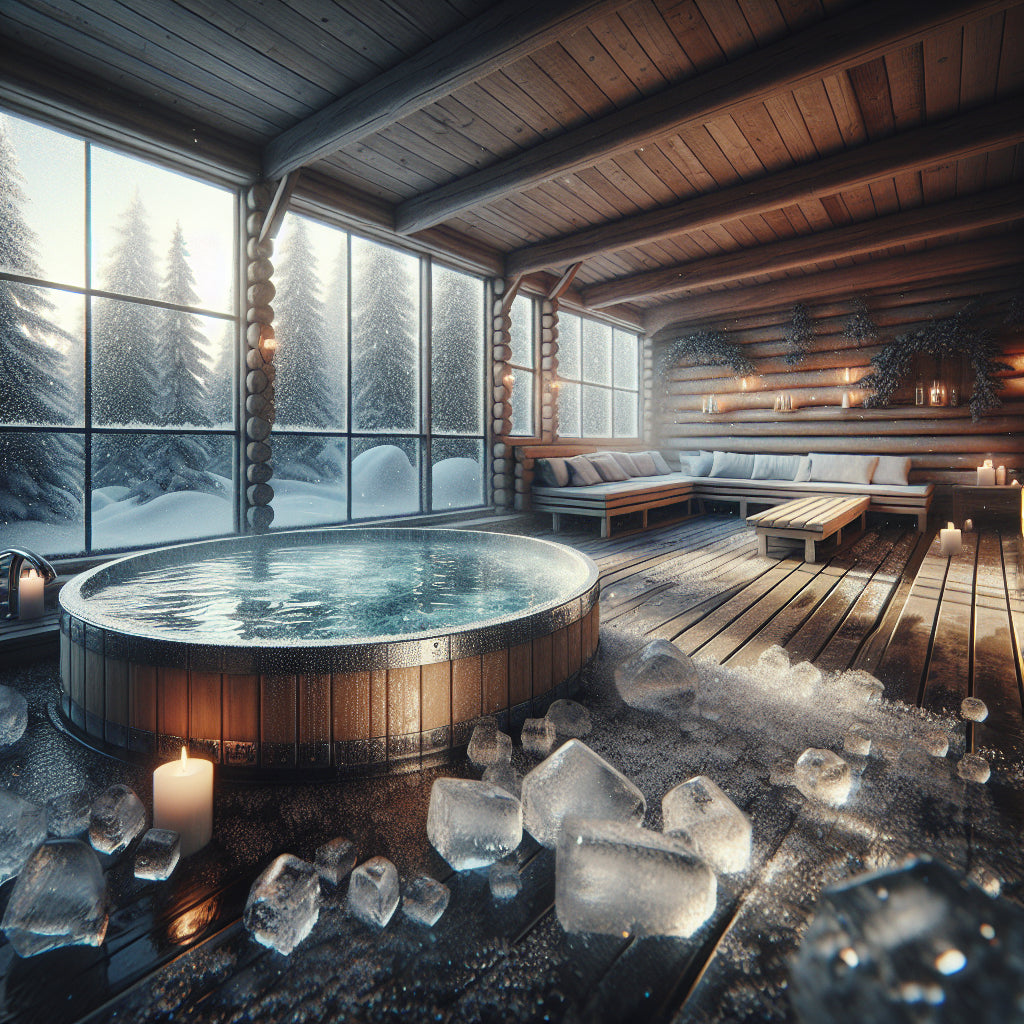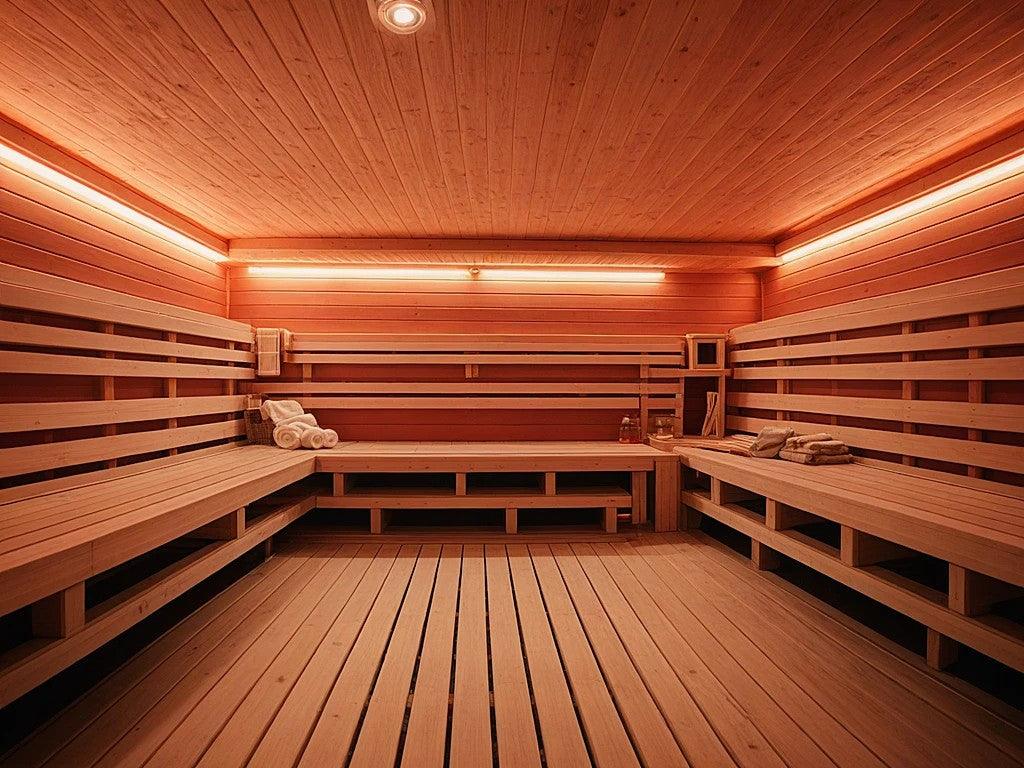Sauna Ventilation: The Key to a Safe and Comfortable Sauna Experience
Saunas have long been celebrated for their health benefits, from relaxation to detoxification. However, there's one aspect that is often overlooked when setting up a sauna: ventilation. Proper sauna ventilation is essential for maintaining a comfortable environment and ensuring the sauna’s effectiveness. Without proper airflow, saunas can quickly become stuffy, humid, and even unsafe.
In this article, we’ll dive into the importance of sauna ventilation, why it’s critical for health and comfort, and how to ensure your sauna is properly ventilated. Whether you’re installing a sauna at home or maintaining a commercial sauna, understanding ventilation is key to an optimal sauna experience.

Why Sauna Ventilation Matters
When most people think about saunas, they focus on the heat and the relaxation it brings. But the air quality in a sauna is just as important as the temperature itself. The right ventilation helps control humidity levels, ensures fresh air circulation, and prevents the build-up of carbon dioxide and other harmful gases.
Without proper ventilation, a sauna can quickly become uncomfortable and ineffective. Too much moisture can cause mold growth, while stagnant air can lead to suffocation risks. Therefore, understanding how to properly ventilate your sauna is critical not just for comfort, but for safety.
Ready to optimize your sauna experience? Explore our infrared saunas and traditional saunas for a safer, more comfortable sauna environment.
The Basics of Sauna Ventilation
1. What Is Sauna Ventilation?
Sauna ventilation refers to the process of controlling the airflow within the sauna room to maintain an optimal temperature and humidity level. This is achieved through strategic intake and exhaust vents, ensuring that fresh air is consistently supplied and excess moisture is removed.
Ventilation plays a major role in creating a pleasant sauna experience. Without it, the air can become stagnant, uncomfortable, and even hazardous to your health. Proper ventilation helps ensure that the sauna remains comfortable, effective, and safe to use.
2. Why Is Ventilation Important in a Sauna?
Proper ventilation in a sauna serves several key purposes:
-
Air Quality: Ensures fresh air is circulating, preventing the build-up of carbon dioxide and other gases.
-
Humidity Control: Helps manage moisture levels and prevents excessive sweating and condensation from becoming a problem.
-
Comfort: Helps maintain a comfortable temperature and humidity level, preventing the sauna from becoming too stifling.
-
Mold Prevention: Regular airflow helps avoid the growth of mold and mildew, which thrives in stagnant, moist environments.
-
Safety: Proper ventilation reduces the risk of suffocation from high CO2 levels and ensures that the air remains safe to breathe.
Looking for a high-quality sauna with excellent airflow? Check out our low-EMF saunas for a comfortable and safe sauna experience.
How Can You Tell If Your Sauna Needs Better Ventilation?
Recognizing poor ventilation is key to maintaining a safe and comfortable sauna experience. Here are some signs your sauna may not be ventilating properly:
-
Foggy or overly humid air that lingers too long after use
-
Strong, musty odors (an indicator of mold or mildew starting)
-
Visible condensation on walls or ceilings
-
Stale or stuffy feeling even after just a few minutes inside
-
Warping or discoloration of wood from trapped moisture
-
Headaches or dizziness due to CO₂ buildup in poorly ventilated spaces
If you notice any of these signs, it's time to reassess your sauna’s vent placement, air flow pattern, and possible need for an exhaust fan or increased airflow.
🔧 Pro Tip: Use a small hygrometer or CO₂ monitor to track real-time air quality. For home setups, even passive fixes like adding a vent hood or fan can make a dramatic difference.
How to Properly Ventilate Your Sauna
1. Choose the Right Ventilation System

There are a few key factors to consider when setting up sauna ventilation:
-
Intake Vent: The intake vent is responsible for bringing fresh air into the sauna. This vent should be located near the lower part of the sauna, ideally under the heater, to draw in cooler air. The cool air then rises and mixes with the hot air from the heater, creating a natural airflow.
-
Exhaust Vent: The exhaust vent is responsible for releasing hot, humid air from the sauna. This vent should be placed high up on the opposite wall from the intake vent. The exhaust vent allows the hot air to escape, helping to maintain a proper temperature and humidity level.
-
Manual vs. Powered Vents: While basic saunas may only require passive ventilation with intake and exhaust vents, more complex systems may incorporate powered fans for active airflow, especially in larger saunas.
2. Proper Placement of Vents
The placement of both the intake vent and the exhaust vent is essential for maintaining proper airflow and ventilation. A poor setup can lead to inefficient air circulation, which can make the sauna uncomfortable and ineffective.
-
Intake Vent: Place this vent low on the wall, close to the heater, so it can bring in fresh air that will be heated as it rises.
-
Exhaust Vent: This should be placed high on the wall, allowing the hot, humid air to escape naturally. The higher placement ensures that the hot air doesn’t get trapped and that a steady flow of fresh air can enter.
3. How Often Should You Maintain or Clean Sauna Vents?
To keep your sauna operating efficiently, it’s important to maintain the ventilation system regularly:
-
Inspect vents monthly for dust, cobwebs, and blockages
-
Wipe down wooden vent covers with a damp cloth — avoid chemical cleaners that may off-gas when heated
-
Vacuum air intakes (if accessible) every 2–3 months
-
For powered systems, check fan filters quarterly and replace as needed
Routine cleaning not only extends the life of your sauna components but also ensures you’re always breathing clean, fresh air during your sessions.
🧼 Bonus Tip: If your sauna is used daily, increase vent inspections to biweekly — especially in humid environments.
4. Humidity Control
Humidity is a key aspect of sauna comfort. In a traditional sauna, humidity is controlled by the amount of water you pour onto the hot stones. This raises the moisture level and creates steam, which helps to open pores and increase perspiration. However, too much humidity can lead to discomfort and condensation, while too little can make the sauna feel dry and ineffective.
Proper ventilation helps to balance humidity by allowing steam to escape and maintaining the right moisture levels.
Want to explore a sauna designed for optimal comfort and airflow? Visit Infinite Sauna to discover our range of hybrid saunas and outdoor saunas, designed for an enhanced sauna experience.
Sauna Ventilation for Different Types of Saunas
1. Traditional Saunas
In traditional saunas, the heat comes from a stove that heats stones, and the humidity is controlled by throwing water onto the stones. Ventilation is critical for maintaining both the temperature and humidity balance. It also ensures the removal of the moisture created from the steam, which could otherwise lead to mold growth or discomfort.
Proper ventilation ensures that the sauna remains breathable and safe, while also improving the efficiency of the heating system.
2. Infrared Saunas
Infrared saunas are a newer technology, and they typically use lower temperatures and dry heat to promote sweating. Ventilation in infrared saunas is important to ensure that the air remains fresh and doesn’t become too stuffy. These saunas typically require less ventilation than traditional saunas, but air circulation is still important to prevent overheating or uncomfortable moisture build-up.
Want to Learn More About Sauna Ventilation?
Keep Your Sauna Safe and Comfortable with Proper Ventilation
Proper sauna ventilation is key to creating a comfortable, effective, and safe sauna experience. Whether you’re enjoying a traditional sauna or an infrared sauna, ensuring that fresh air circulates properly and moisture levels are managed will enhance your relaxation and improve the overall benefits of your sauna sessions.
When designing or setting up your sauna, be sure to consider the placement of vents, the type of ventilation system, and how you can maintain a balance of humidity. By doing so, you’ll not only improve your sauna experience but also ensure it remains a safe and effective space for years to come.







Leave a comment
This site is protected by hCaptcha and the hCaptcha Privacy Policy and Terms of Service apply.